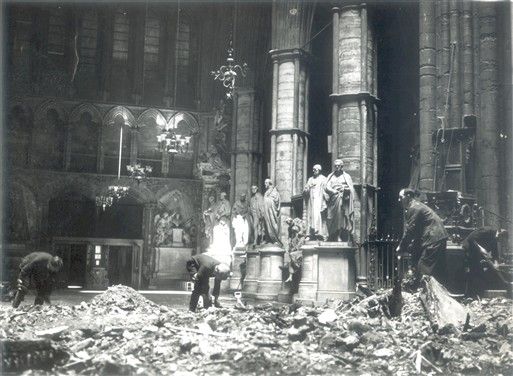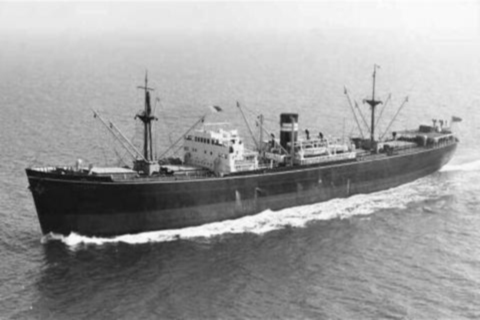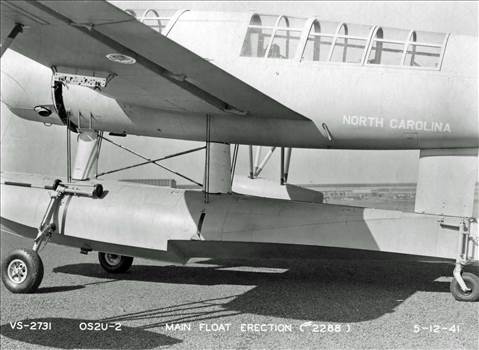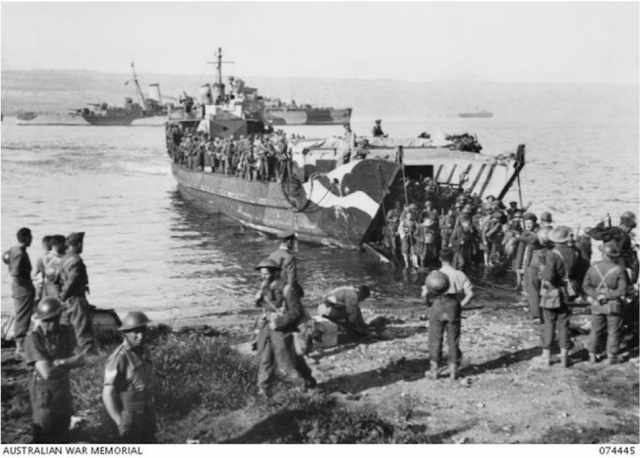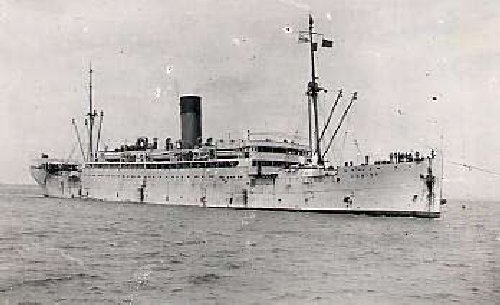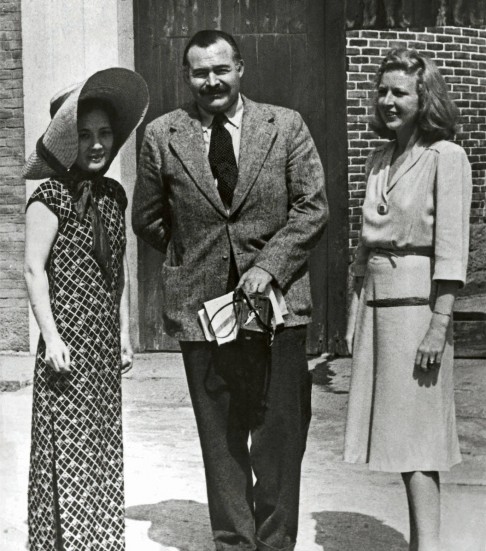Thursday 15 May 1941
 |
| Gloster -Whittle G.40 E28/39 on its first flight, 15 May 1941. |
Oberst Junck sends a Heinkel bomber to Fort Rutbah, which it finds under British command and bombs. While this does little to damage the fort, it confirms British intelligence that the Luftwaffe has arrived in Iraq. Some accounts state that Major Axel von Blomberg, head of the reconnaissance group that preceded Junck's flight, is shot and killed by ground fire today while flying to Baghdad, other accounts state that this happened several days previously.
The RAF also continues conducting air attacks. The Iraqis get a rare success against the British airplanes today when they shoot down a Swordfish of 814 Squadron during a dive-bombing attack on some military barracks at Samawah, midway between Baghdad and Basra.
The air situation in Iraq is confused. The Iraqis have some Bristol Blenheims, and they use one today to attack Kingcol, the troop convoy coming from Palestine. However, the RAF basically has control of the air even despite recent Luftwaffe reinforcements. The French High Commissioner in Syria, General Dentz, protests to the British about the recent RAF air raids on his airfields at Palmyra and Aleppo which are being used by the Luftwaffe.
General William Slim assumes command of the Indian 10th Infantry Division at Basra.
Free French General Catroux issues a demand for Vichy Syria to surrender to British forces.
 |
| Luftwaffe General Ulrich Grauert, KIA 15 May 1941. |
The RAF sends Rhubarb operations composed of 20 planes along the French coast. RAF Bomber Command raids Berlin (14 bombers), Cuxhaven and Hannover (101 aircraft).
During the RAF Rhubarb attacks, the Junkers Ju 52 transport of Luftwaffe Generaloberst Ulrich Grauert, commander of the 1st Air Corps, is spotted flying near St. Omer, France. F/Lt Jerzy Jankiewicz, flying a Supermarine Spitfire, and Sgt Wacław Giermer, flying a Spitfire II, from the No. 303 Polish Fighter Squadron, combine to shoot the plane down and kill Grauert. This is a sign of increasing RAF penetrations over the Continent during daylight hours. There is the possibility that this interception is not a moment of serendipity, as the British are reading many Luftwaffe coded messages in the Ultra program.
 |
| British Royal Air Force Vickers Wellesley taking off in East African, 15 May 1941. |
Battle of the Atlantic: U-105 (Kptlt. Georg Schewe), on a lengthy second patrol out of Lorient, torpedoes and sinks 5920-ton British freighter Benvenue a little over 400 miles off Freetown. There are two deaths and 55 survivors.
U-43 (Kptlt. Wolfgang Lüth), on its seventh patrol out of Lorient, spots a three-masted sailing ship on the fourth day of its patrol. It is 488-ton French sailing ship Notre Dame du Châtelet. Rather than waste a torpedo on it, Lüth surfaces and uses his deck gun. U-43 pumps 45 shells into the ship, sinking it. The French crew reflects the state of confusion in their country's allegiances by assuming they had been sunk by a British submarine. Because the ship took so long to sink, Lüth assumes that it has alerted the Royal Navy to his position and quickly leaves the area. There are ten survivors and 28 deaths, with the survivors being picked up by passing Italian submarine Otaria on 23 May.
The RAF sinks 1564 ton Swedish freighter near Heligoland. There are three deaths. Great Britain, of course, is not at war with Sweden, but the ship is operating in a well-known war zone.
Free French submarine Surcouf is assigned to patrols based on Bermuda. US Navy heavy cruisers USS Quincey and Vincennes of the 11th Destroyer Squadron also join the Central America Neutrality Patrol there.
The 1st Minelaying Squadron lays minefield SN 9B.
Convoy OG 2 departs from Liverpool bound for Gibraltar.
Battleship USS Washington, a sister ship of USS North Carolina, is commissioned at the Washington Navy Yard. While this is months ahead of schedule and a boost to US Navy morale, the commissioning is a bit premature, as Washington's engines have not been run at full power. In fact, the engines have some unnoticed issues (acute longitudinal vibrations from her propeller shafts) that will be noticed when they are properly tested and require further work. USS Washington is scheduled for Atlantic service.
Submarines USS Amberjack and Halibut are laid down.
Royal Navy corvette HMS Coltsfoot is launched.
Canadian corvette HMCS Galt (Lt. Alexander D. Landles, K 163) is commissioned.
U-577 and U-578 are launched, and U-169 and U-195 are laid down.
 |
| The bombed-out horseshoe gallery at Liverpool museum, May 1941. |
The British attack with three columns aimed squarely at Halfaya Pass and the surrounding coast and inland area. The 22nd Guards Brigade and 4th Tanks under the overall command of Brigadier William Henry Ewart "Strafer" Gott, commander of the 7th Support Group, open the offensive at Halfaya Pass and achieve complete surprise against Italian defenders. However, the Italians recover quickly and make use of the heights to destroy seven heavy Matilda tanks before giving up the top (but not the bottom) of the pass. The Germans occupying Fort Capuzzo then move forward and put up a spirited resistance. The battle seesaws back and forth throughout the day, with Fort Capuzzo changing hands several times and the Germans recapturing Musaid at the top of Halfaya Pass. General Rommel acts quickly and sends his own panzers forward, both to repel the British attack and to reinforce the southern perimeter of Tobruk. As the day ends, the British have secured the critical Halfaya Pass, but little else of value, and are under pressure by the German response.
The Royal Navy gets ready for the coming Luftwaffe attack on Crete by organizing its forces into Forces A, B, C, and D. Force A, led by battleships Barham and Queen Elizabeth, is the most powerful. During the night, the Royal Navy sends elements of the 2nd Battalion Leicester Regiment to Heraklion aboard cruisers HMS Fiji and Gloucester.
 |
| Luftwaffe attacks on Suda Bay, 15 May 1941 (Australian War Memorial). |
Italian 861 ton freighter San Giusto hits a mine and sinks about 15 miles from Tripoli.
The Luftwaffe raids Cyprus, perhaps as misdirection for Operation Mercury. The British, amply informed by Ultra, are not fooled.
Air raids continue on Malta. During the day, the airfields at Luqa and Hal Far are hit. The Luftwaffe continues using Bf 109 fighter-bombers (Jabos) with great success. While the Jabos can't carry large bomb loads, they have great accuracy and incur few losses. During the night, there is a large raid centered on Grand Harbour and Luqa. Destroyer HMS Encounter is hit in a bomb that explodes in its boiler room, while MV Amerika suffers from a near-miss.
The Germans lay many mines at the entrance to Grand Harbour, a problem for the British magnified by the fact that so many minesweepers at Malta have been sunk recently. These include the new G mine.
New Zealand Prime Minister Peter Fraser arrives in Cairo on an inspection tour of New Zealand forces.
Spy Stuff: Soviet sleeper agent Richard Sorge, posing as a newspaper reporter in Tokyo, uses his clandestine radio to report to Moscow. He apparently gives further warning of Operation Barbarossa, this time specifying the third week of June for the attack. Sources vary on exactly when Sorge makes these transmissions and exactly what he says in them. The Soviet "Korsikanets" and "Starshina" sources in Berlin and other sources also have been giving Stalin confirmation of the coming German invasion, but Stalin prefers to trust his personal instinct and Hitler's secret reassurances that he considers the USSR to be a staunch ally.
In London, British intelligence officers interrogate Karel Richter, a German spy captured recently. Richter gives them valuable information about other German spies in the UK. This includes information about German cabaret singer Clara Bauerle, who is not a spy, but is the mistress of Josef Jakobs, who is a German spy and thus suspected of being a spy.
Applied Science: At Suffield, Canada, artillery shells are tested containing metallic cadmium mixed with explosive RDX. This is intended to release smoke that damages the inhalers' lungs. Chemical warfare, of course, is banned following the tragedies of World War I.
German/Vichy French Relations: Marshal Petain gives his approval of Vice Premier Admiral Darlan's recent agreement with the Germans. Pursuant to this agreement, Germany has free access to Syrian airfields held by Vichy French forces. This is a sign of growing collaboration between the two governments.
Anglo/US Relations: US Navy Patrol Squadron 52 (VP-52) transfers from Naval Air Station (NAS) Quonset Point, Rhode Island north to NAS Argentia, Newfoundland. The ten PBY-5A Catalinas, serviced by seaplane tender USS Albemarle (AV-5), are intended to fly anti-submarine patrols along the North Atlantic convoy routes to Great Britain.
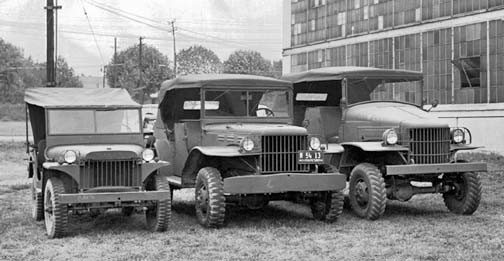 |
| Truck, 1/4 ton, 4x4 Willys MA (left), Truck, Command Reconnaissance, 3/4 ton, 4x4 Dodge WC-56, and Truck, Radio, 1/2 ton, 4x4 Dodge, 15 May 1941. |
The policy of this government in its relations with the French Republic has been based upon the terms of the armistice between Germany and France and upon recognition of certain clear limitations imposed upon the French Government by this armistice.Roosevelt strongly disapproves of French collaboration:
The people of the United States can hardly believe that the present Government of France could be brought to lend itself to a plan of voluntary alliance, implied or otherwise, which would apparently deliver up France and its colonial empire, including French African colonies and their Atlantic coasts, with the menace which that involves to the peace and safety of the Western Hemisphere.The statement appears to be timed to Senate passage of the Ship Seizure Bill, as France has over a dozen ships sitting idle in US ports that are subject to seizure - including massive liner Normandie.
Soviet Military: Stalin, following his bellicose 5 May speech to graduating officers in Moscow, has had General Zhukov prepare a plan of attack against the Reich. In the Zhukov Plan of May 15, 1941, the Southwestern and Western Fronts (centered around Zhukov's former command at Kyiv) will be the axis of advance. The objective of the invasion will be to destroy the opposing Wehrmacht defense and advance across Poland toward the Reich border. This, Zhukov believes, would force the Wehrmacht to abandon Greece and Yugoslavia and cut the Germans off from their essential Romanian, Hungarian and Bulgarian allies (Romania is important more for its oil fields than its military). Once the Red Army has broken through, it could turn north and northwest to encircle the northern wing of the German defenses. Furthermore, the Red Army would invade Finland and complete the unfinished business from the Winter War.
The plan, which has no start date, and of course is never executed, reflects the poor state of Soviet military intelligence at this time. Zhukov is under the impression that the main Wehrmacht forces are across the border from Kyiv rather than further north, and that defeating them would eliminate the Wehrmacht's ability to resist. This is an easy mistake to make because Hitler also prefers to place more emphasis on this sector than the Baltic states and Moscow, which he thinks are pointless political objectives. The Wehrmacht generals, however, are of the opinion that taking Moscow is a top priority, and the OKW subtly has been orienting the main attack further north.
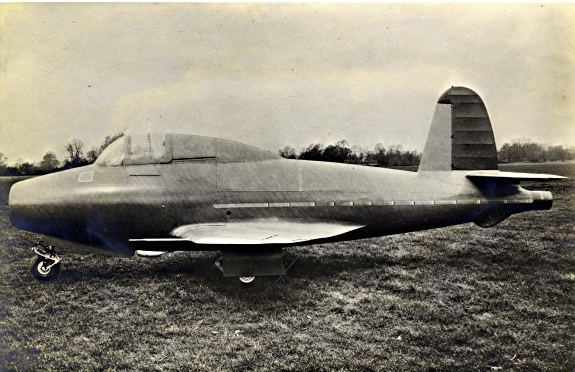 |
| Gloster-Whittle E.28/39 W4041/G in its original configuration (Gloster). |
The Royal Navy transfers corvettes HMS Arrowhead, Bittersweet, Eyebright, Fennel, Hepatica, Mayflower, Snowberry, Spikenard, Trillium and Windflower to the Royal Canadian Navy. This is a reflection of the continued move westward of U-boat attacks. The corvettes all retain their names but now will be manned by Canadians.
US Military: During parachute training, a Marine Corps officer, 2nd Lieutenant Walter S. Osipoff, is left dangling from his transport after a mishap. Two US Navy men, Lt. John Lowery and Aviation Chief Machinist's Mate John McCants, quickly get in a Curtiss SOC-1 Seagull biplane and fly up to save Osipoff by cutting his lines with their plane's propeller and hauling him into the rear cockpit. Lowery and McCants are awarded the Distinguished Flying Cross.
The first Civilian Public Service camp for conscientious objectors opens near Baltimore, Maryland.
British Government: Prime Minister Winston Churchill answers questions in the House of Commons. He inadvertently lets slip that Minister of Economic Warfare Hugh Dalton (who coincidentally marks his one-year anniversary in the post today) is part of the country's propaganda efforts. Since Dalton presumably is providing real information regarding trade, this calls into question his ministry's regular press releases.
Churchill rejects a request that representatives of all three major political parties be included in the War Cabinet - and not just Churchill's cronies. Churchill's reasoning is that the War Cabinet is composed of non-Departmental Ministers, and the leader of the Liberal Party is Air Minister.
Regarding Rudolf Hess, Churchill denies that his mission was intended to seek a separate peace for Scotland, stating, "Whatever delusions may exist, that is not among them." He does not mention that Hess has proposed a complete peace, not just one with Scotland.
At the evening War Cabinet meeting, Churchill claims that the Japanese "always showed nervousness when either the United States or [Great Britain] took a strong line." Reasoning that the Japanese would never attack the Dutch East Indies without the certainty of US neutrality, he denies an Admiralty request that naval forces be sent to the Far East to strengthen its defenses.
Labour Minister Ernest Bevin makes the first official government statement on the Rudolf Hess incident, stating:
I do not believe that Hitler did not know that Hess was coming to England. From my point of view Hess is a murderer. He is no man I would ever negotiate with and I don't change even for diplomatic reasons. I am not going to be deceived.Interestingly, he does not adopt the "Hess is crazy" line that Germany already is using and that the British themselves believe is the most convenient cover story.
The government announces that, in operations in Norway and France, there were 13,250 men killed and 41,000 captured out of a total of 437,000 soldiers deployed.
 |
| A new Dodge WC9 truck, 1/2 ton Ambulance, 15 May 1941. |
New York congressman Hamilton Fish has called the bill "the grossest breach of international law in history," while Illinois congressman Leo Allen has warned of German and Italian retaliatory seizures of US property. US Air Force General Hoyt Vandenberg also thinks the move imprudent, terming it a "provocative step toward war."
Now that the bill has passed Congress, all that remains is for President Roosevelt to sign it for it to become law, which he promptly does. It is commonly believed that this bill is passed in retaliation for Vichy French collaboration with the Reich. French freighters are still coming into US ports, and they now are liable to seizure as they arrive. The biggest prize of all is the 83,423-ton liner Normandie, berthed in New York City. FDR sends guards to board all French ships in US ports pursuant to the new law.
Yugoslavian Homefront: Croatian strongman Ante Pavelić visits Rome to meet with Pope Pius XII. The Pope offers de facto recognition of Pavelić and his government. This is controversial on many levels, including the massacre in Glina that just concluded, but there is disagreement about how much the Pope knows about what is happening in occupied Yugoslavia.
Singapore: General Percival returns from England by air.
Haiti: Elie Lescot becomes president.
Holocaust: Dr. Sigmund Rascher, a captain in the Luftwaffe's Medical Service, writes a letter around this time to Reichsfuehrer-SS Heinrich Himmler requesting permission to perform medical experiments on concentration camp prisoners. Rascher makes clear that the experiments, to test human physiology at altitude, would involve fatalities. Himmler quickly has his adjutant, Rudolf Brandt, grant permission.
 |
| "Further large numbers of British troops arrived today, 15-5-41, to strengthen the defence of Malaya. The Royal Navy and merchant marines showed their capacity again in the arrival of this contingent which traveled through the North Atlantic and the 11,000 miles to Malaya without incident. The picture shows:- British troops arriving in Malaya." © IWM (K 667). |
British Homefront: There is a report in the British press today that Dame Sibyl Mary Hathaway, DBE (née Collings), the Dame of Sark in the Channel Islands, has been arrested by the Germans and deported to a concentration camp. However, this appears to be erroneous, as the Dame (who survives the war) makes no mention of the incident in her autobiography and is known to be present on the island throughout the war. How the story originated is a mystery, since there was no communication of any kind permitted between the occupied Channel Islands and Great Britain during the war aside from rare Red Cross deliveries. It is unclear if the Dame was aware at this time that her son, Francis William Lionel Collings Beaumont, heir to the Seigneur of Sark, had recently been killed (on 4 May) in the Liverpool Blitz.
American Homefront: New York Yankees centerfielder Joe DiMaggio hits a single in the first inning to drive in the team's only run in a 13-1 loss to the Chicago White Sox. This is the start of DiMaggio's famous 56-game hitting streak.
Joan Crawford's film "A Woman's Face," directed by George Cukor, opens in New York City. Some consider this tale of a female blackmailer who tries to go straight to Crawford's finest performance. The tale is told in the form of flashbacks by other characters.
 |
| The long swing of Joe DiMaggio. |
May 1941
May 1, 1941: British Hold Tobruk
May 2, 1941: Anglo-Iraq War
May 3, 1941: Liverpool Hammered
May 4, 1941: Hitler Victory Speech
May 5, 1941: Patriots Day
May 6, 1941: Stalin In Command
May 7, 1941: May Blitz
May 8, 1941: Pinguin Sunk
May 9, 1941: U-110 Captured
May 10, 1941: Hess Flies Into History
May 11, 1941: The Hess Peace Plan
May 12, 1941: Tiger Arrives Safely
May 13, 1941: Keitel's Illegal Order
May 14, 1941: Holocaust in Paris
May 15, 1941: Operation Brevity
May 16, 1941: Blitz Ends
May 17, 1941: Habbaniya Relieved
May 18, 1941: Croatia Partitioned
May 19, 1941: Bismarck at Sea
May 20, 1941: Invasion of Crete
May 21, 1941: Robin Moore Sinking
May 22, 1941: Royal Navy Destruction Off Crete
May 23, 1941: Crete Must Be Won
May 24, 1941: Bismarck Sinks Hood
May 25, 1941: Lütjens' Brilliant Maneuver
May 26, 1941: Bismarck Stopped
May 27, 1941: Bismarck Sunk
May 28, 1941: Crete Lost
May 29, 1941: Royal Navy Mauled Off Crete
May 30, 1941: Sorge Warns, Stalin Ignores
May 31, 1941: British Take Baghdad
2020
